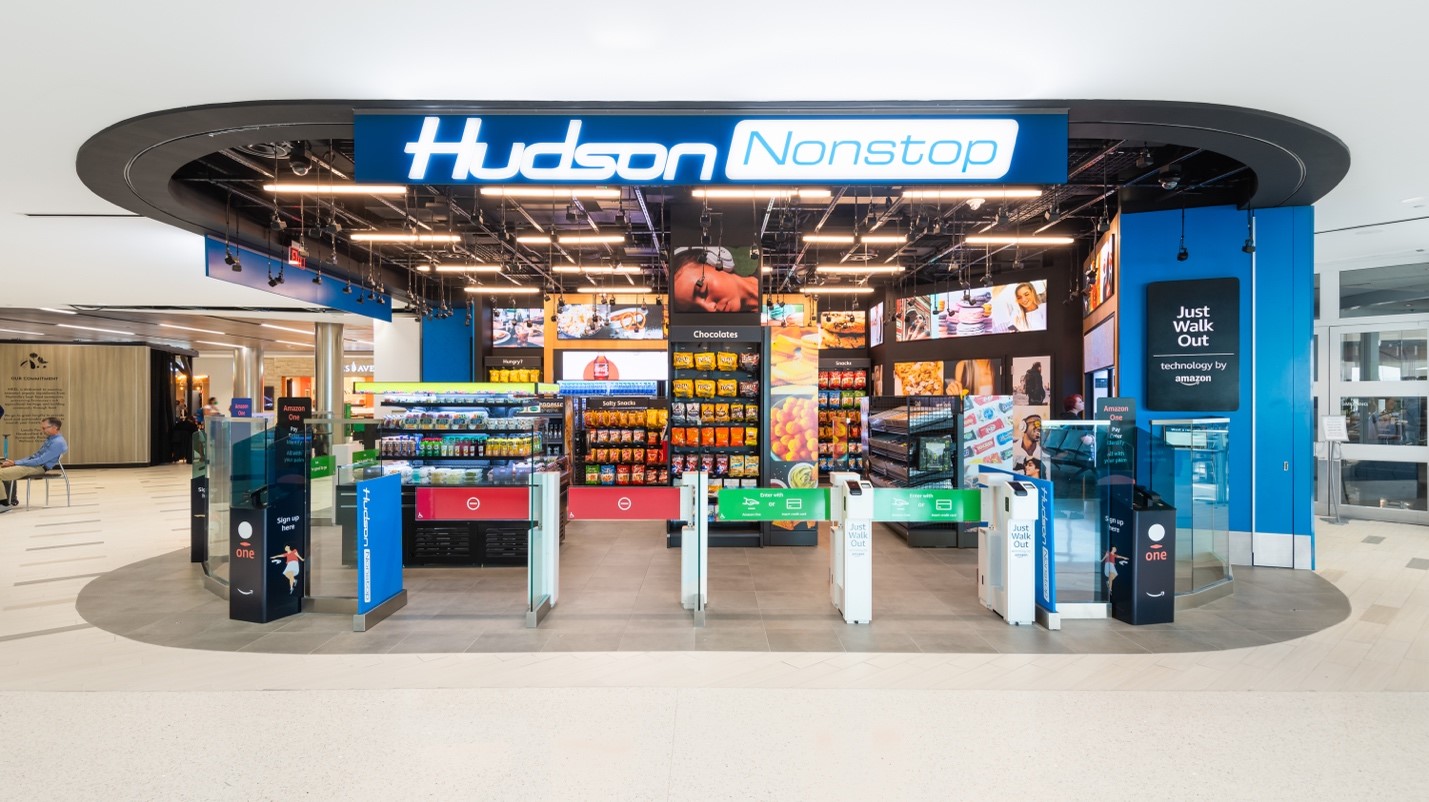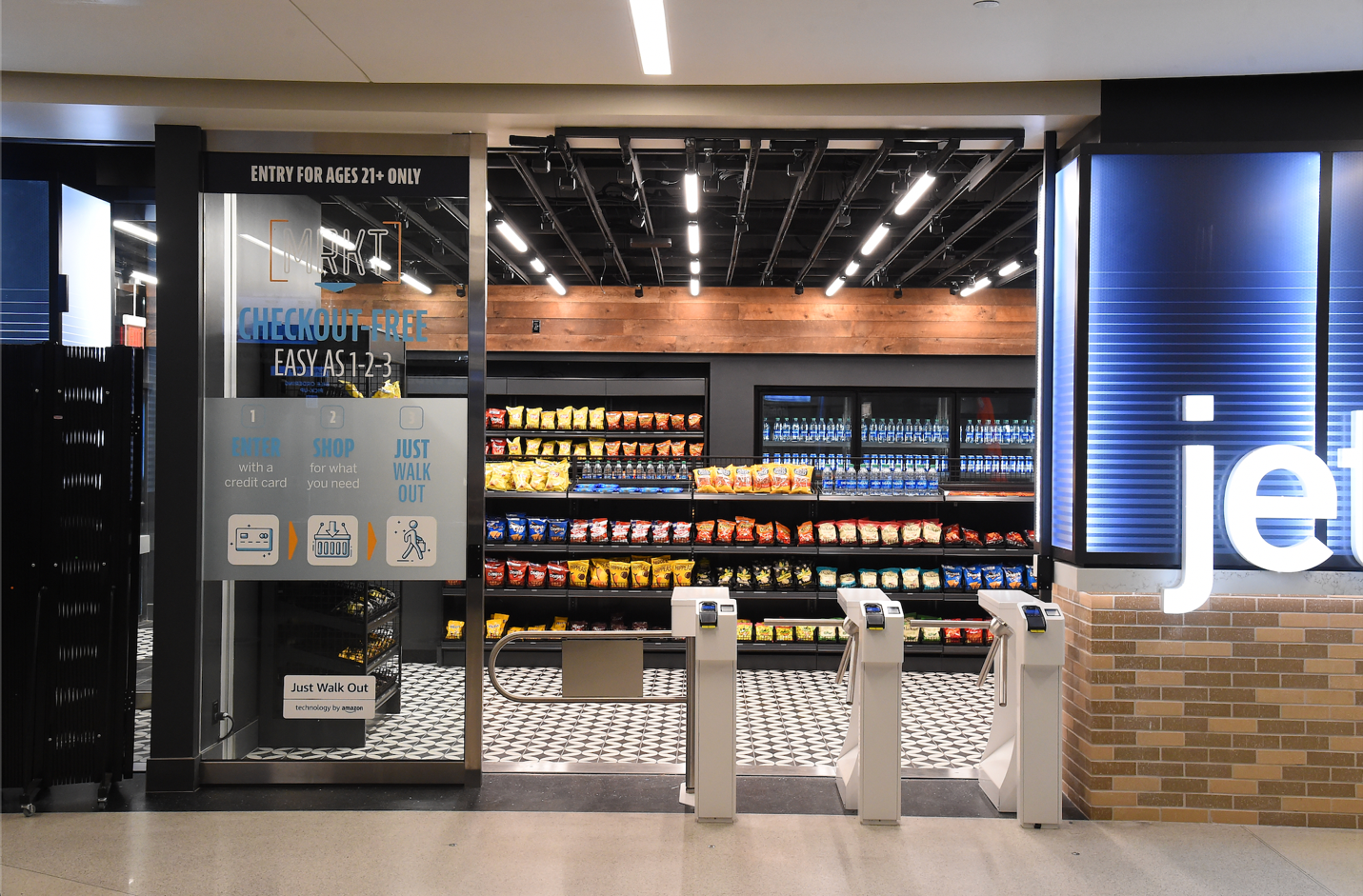What would shopping look like if you could walk into a store, grab what you want, and just go? Consumers want convenient experiences. According to the 2021 Shopper Vision Study from Zebra Technologies, 60 percent of respondents state that long wait times to check out are a major concern while shopping in a store. The report also revealed that 80 percent of retail executive respondents believe that smart checkout is one of the most important solutions to invest in over the next five years. Rather than incrementally improving checkout, the team at Amazon considered what would happen if we removed it entirely.
Our answer, Just Walk Out technology by Amazon, allows consumers to shop as they normally would but save time and effort by eliminating the checkout—meaning no lines, no scanning products, and no fuss.
While the consumer experience driven by our technology is simple, there’s a great amount of complexity behind the scenes. The experience is facilitated by state-of-the-art computer vision (CV), sensor fusion, and deep learning algorithms made possible by several pieces of hardware and a system of in-store and cloud microservices that we’ve designed.
What hardware powers the Just Walk Out technology shopping experience?
Consumers can enter a Just Walk Out technology-equipped store using one of three methods—method types available can vary by store: (1) Amazon One, a contactless identity service that uses your palm to pay; (2) credit or debit card; or (3) app-based entry, using retailer-branded apps. All entry options allow the Just Walk Out technology to identify which account has entered the store and then charge for the items selected when consumers walk out with items.

Once consumers enter the store, our technology relies on in-house-designed cameras to identify what products consumers take off or put back on the shelves. Each of our cameras has high resolution and a wide field of view, allowing us to install the fewest number of cameras possible. The reduced number of cameras makes the technology cost effective. We run CV algorithms directly on the camera to process data locally to reduce the bandwidth needed to send data to other devices or to the cloud. To provide security, our cameras also incorporate hardware-backed security capabilities and end-to-end encryption of data both locally and while being sent between our services.
In addition to cameras, we built shelf sensors to give us more flexibility to provide higher accuracy rates in product identification and to further reduce cost in stores. Our sensors and algorithms have evolved to detect a broad range of products and differences in shopping behavior. These devices are sensitive enough to detect even the smallest products accurately and reliably and to detect products taken or put back that cameras are unable to see.
To bolster our algorithms and ensure high accuracy for our artificial intelligence (AI) models, our research teams built millions of sets of synthetic data and machine-generated photorealistic data to build and refine our algorithms and provide a seamless consumer experience. The combination of real-world and synthetic data allowed us to build advanced algorithms that address all types of scenarios in stores.
Bringing the power of the cloud to the store
While Amazon Web Services (AWS) helps us to elastically scale our resources to process data, stores can be a long distance from a data center, and there can often be a large amount of data to process. Our initial prototypes and installations in our own store formats started with all of our processing done in the cloud. As we scaled to different locations and larger store formats, we quickly needed to iterate on an architecture to allow us to run our algorithms where it makes the most sense—either in the cloud with elastic compute or in the store where the data is.
To manage these bandwidth issues, we built an edge computing architecture to process sensor data and compute receipts locally without going back and forth to the cloud. Placing compute close to our data helps us to improve reliability by sending less data over the internet.
Ultimately, all our cameras, sensors, and scanners create a significant amount of data to process. To make the whole system more robust, the data streams are processed as independently as possible, resulting in a highly concurrent and asynchronous architecture.
To keep our experience highly reliable, we focus heavily on reducing the impact of any bug, scaling issue, or internet outage. To do so, we have adopted a cellular architecture that separates the processing of different stores from each other. This helps us place an upper limit on the size that any instance of our service needs to grow, improving testability and reducing risk when rolling out new changes. To offset running more independent instances of our software, we invest heavily in zero-touch launching and monitoring of new cells.
We built and adapted our services and architecture to scale store formats and use cases, everything from quick trips for a snack at a convenience store to purchasing weekly supplies for the whole family at a large grocery store. We need to be able to handle the first customer of the day and busy lunch and dinner rushes and then scale back down overnight. Our first store was about 1,800 square feet of shopping area. Since then, we have launched across multiple verticals and footprints, up to grocery stores such as Amazon Fresh, where some stores contain over 40,000 square feet of shopping space.
Adoption of Just Walk Out technology
We believe that many shoppers are more likely to choose to shop at a store when the experience is fast, easy, and convenient, and we know our technologies can facilitate this for retailers. A number of retailers choose Just Walk Out technology because of our reliable and scalable service functionality, proven operational and security expertise, pace of innovation, and our ability to help them provide a frictionless shopping experience for their consumers. By using our technology in their stories, retailers can also help their employees spend more time assisting shoppers, answering questions, helping shoppers find items, and restocking shelves as needed rather than operating checkouts.
Our technology is live not only in Amazon’s own physical stores, but also in retail, hospitality, travel, and stadium environments. Just Walk Out technology is available in more than 50 Amazon stores and more than a dozen third-party customer stores. Our customers have adopted our technology across multiple verticals. Hudson, a travel retailer, uses our technology to offer travelers a checkout-free shopping experience with an expansive variety of on-the-go snacks, beverages, and everyday travel essentials. Sports and entertainment venues like Climate Pledge Arena and TD Garden have launched Just Walk Out technology stores to provide guests with a convenient food-and-beverage experience without missing a minute of game play or a moment of a show.


With years of development and operations in our own stores and in partnership with our customers, our team has processed millions of real-world transactions and solved multiple edge cases while continuing to add functionality for Just Walk Out technology. The result is the most robust, flexible, and accurate—yet operationally lightweight technology—available. Our mission is to bring this technology to your customers so that they, too, can benefit from what Amazon’s customers have experienced with our stores.
To learn more, visit www.justwalkout.com.
from Hacker News https://ift.tt/kLIsQZP
No comments:
Post a Comment
Note: Only a member of this blog may post a comment.